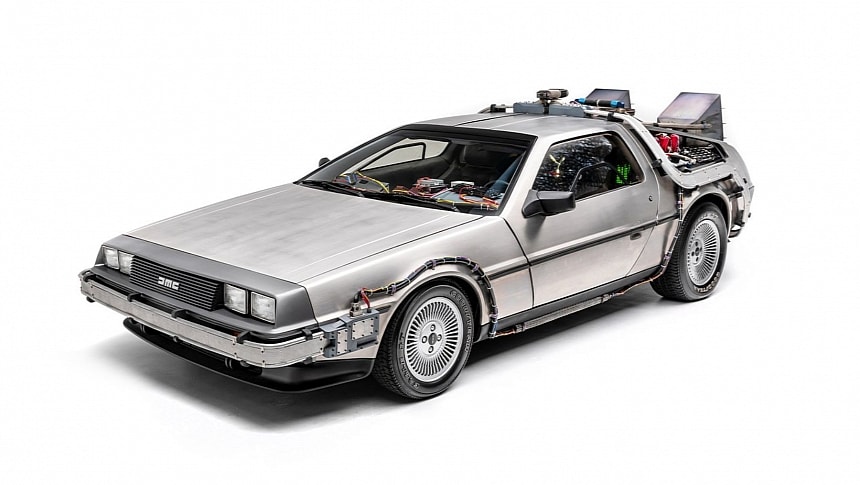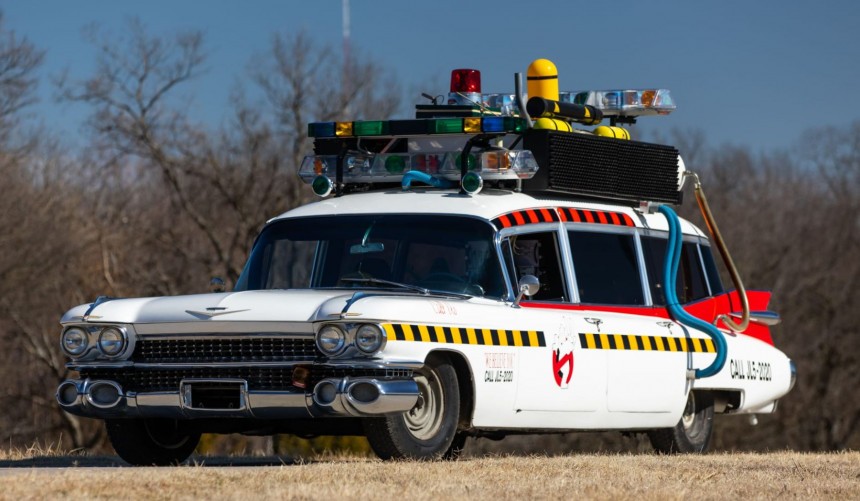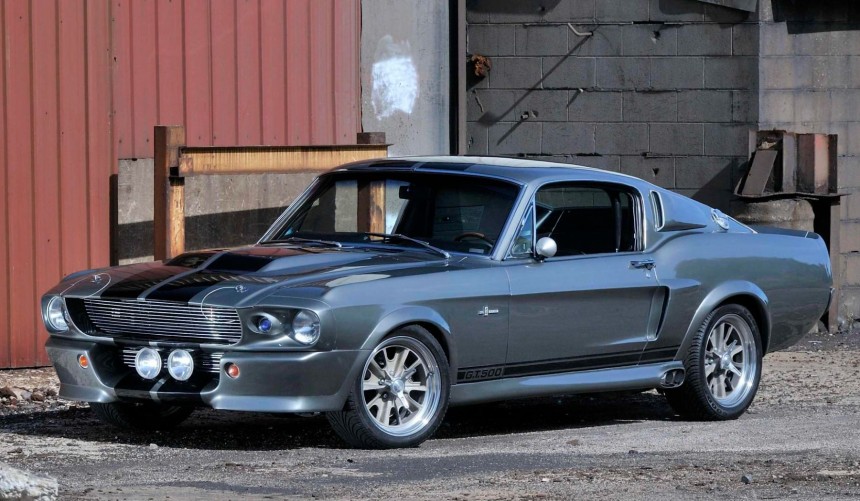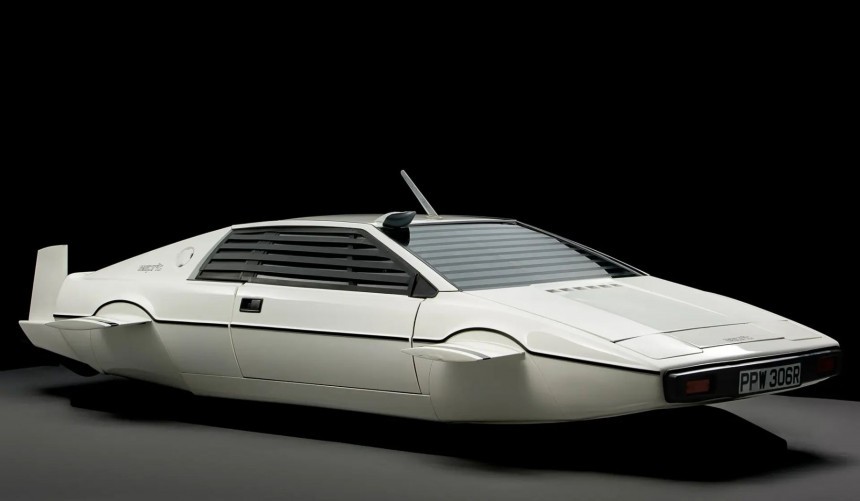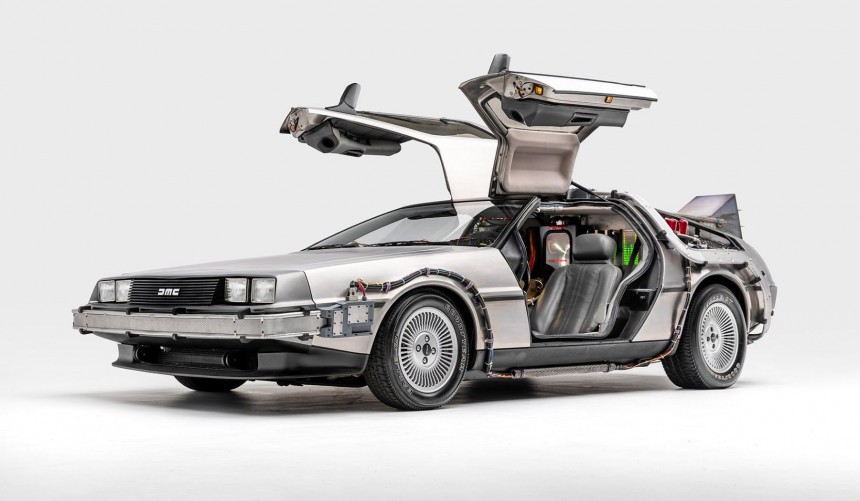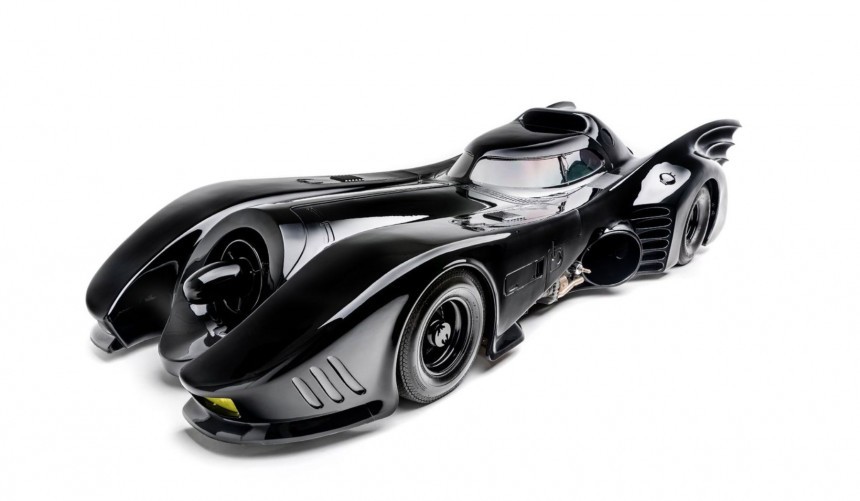For car enthusiasts, these five movie icons are arguably more famous than the actors they shared the set with.
During the 20th century, both the automotive and the film industries evolved at an accelerated pace.
Cars were used in movies from the early stages of both industries, from the 1940s onwards, they started being more spectacular and, in some instances, became the central focus of the plot.
While Hollywood has produced hundreds, if not thousands, of memorable movie cars, in this article, we'll remember the five most iconic.
Based on a concept created by Dan Aykroyd and Harold Ramis, who also starred in the movie alongside Bill Murray, Rick Moranis, and Sigourney Weaver, the original Ghostbusters supernatural comedy was released in 1984.
The plot centered around three former parapsychology professors who established a paranormal investigation and elimination service, then went around New York City, chasing and eliminating ghosts.
A huge box office hit, the movie also featured a car that became just as famous as the film itself.
Called Ecto-1 (or Ectomobile), the repurposed ambulance was used to transport the Ghostbusters and their complex equipment.
The famous movie car started life as a custom-built 1959 Miller-Meteor Futura, created on the backbones of a Cadillac Series 75 commercial chassis. This model was a so-called end-loader combination car, meaning that it could be used as either a horse or an ambulance.
Its iconic movie props and paintwork were based on a design by Steven Dane, who was credited as the film's Hardware Consultant.
Two identical examples were commissioned by the production team, and both were used for the other four movies in the Ghostbusters franchise.
Originally released in 1974, Gone in 60 Seconds was an American independent action film written, directed, produced by, and starring H. B. Halicki.
The movie became a cult classic, and so did the hero car, a yellow 1971 Mustang Sportsroof called Eleanor.
In 1995, Disney brought the rights to the movie from Halicki's widow, and five years later, a remake featuring Nicolas Cage and Angelina Jolie (among other notable actors) was released.
Like the original 1974 film, the remake also featured a Mustang as the hero car, but the new Eleanor became even more famous than its predecessor and even both movies.
Based on the 1967 Ford Mustang but depicted as a Shelby GT500, the 2000 Eleanor was developed by Cinema Vehicle Services of North Hollywood, California.
Eleven units were built, all of which received several modifications, including an awesome body kit that has been heavily replicated by custom Mustang enthusiasts.
Out of the eleven, three were fully functional. The main hero (pictured above) was powered by a 400-hp Ford Racing 351-ci (5.8-liter) crate engine.
Considered the most desirable of the 2000 Eleanors used during production, the main hero car sold at Mecum's Indianapolis auction on May 18, 2013, for $1 million.
Throughout the history of the James Bond franchise, many impressive cars became big-screen icons, but arguably, the most famous and most insane 007 car was the submersible Lotus Esprit nicknamed Wet Nellie.
Used in the 1977 film The Spy Who Loved Me, starring Roger Moore, Wet Nellie was a white Esprit S1 that could transform into a sub.
According to the plot, it was developed by the Q-Branch of MI6, but in reality, the vehicle, which was actually a functional submersible, was developed by Perry Oceanographic, Inc., in Riviera Beach, Florida.
A wet sub, meaning that it didn't maintain a dry interior and requited occupans to use scuba gear, the car was based on an the actual shape of an Esprit body shell, but everyything was custom-built.
Electrically powered and operated by ex-U.S. Navy SEAL Don Griffin during filming, Wet Nellie didn't actually transform from a standard Lotus to a submersible. The crew used two production Esprits and up to seven fiberglass body shells to film the car-to-sub transformation process.
For years, it was believed that the iconic movie car was lost, but it resurfaced in 1989 and went through a comprehensive restoration process. In 2013, it was bought by Elon Musk, who still owns it today.
If you grew up in the 1980s or 1990s, the Back to the Future trilogy is surely one of your favorite movies.
Created by Robert Zemeckis and Bob Gale, the first film was released in 1985, and apart from a box-office hit in the States, it became a global phenomenon.
Starring Michael J. Fox and Christopher Lloyd, the original Back to the Future was followed up by two additional movies released in 1989 and 1990.
Apart from the actors it featured, the trilogy turned the DeLorean DMC-12 into one of the most famous cars in the world.
Used by the main characters, Marty McFly and his eccentric scientist friend, Emmett "Doc" Brown, the DeLorean was transformed into a time machine used to transport the two to different timelines.
Though it wasn't an actual time machine, the DMC-12 used in the movie went through a comprehensive cosmetic upgrade courtesy of artist Ron Cobb and illustrator Andrew Probert, who worked under the supervision of production designer and art director Lawrence Paull.
The makeshift hardware installed on the car was created using common parts. One notable example was the base for the nuclear reactor that started life as a Dodge Polara hubcap.
For the original movie, three 1982 DeLoreans were used: one for the stunts, the other one for special effects, and the third, aka the main hero car, for normal shots.
Though all three often broke down, as the DMC-12 was notoriously unreliable, the model was chosen for its futuristic look and gullwing doors.
Legend has it that Ford offered the producers a lucrative deal to use the Mustang for the movie, but they were swiftly turned down.
Today, the main hero car, which went through a comprehensive restoration, can be admired at the Petersen Automotive Museum in Los Angeles, California.
Since Batman moved from comic book pages to the TV and big screens, tens of variations of the superhero's car, the Batmobile, have been created.
From the 1960s TV series' Lincoln Futura-turned-hero car to the modern, custom-built Tumbler, several Batmobiles have become four-wheeled superstars.
In our humble opinion, the most badass Batmobile ever featured in a movie is the one used in Tim Burton's live-action films Batman (1989) and Batman Returns (1992).
Created by production designer Anton Furst and conceptual illustrator Julian Caldow, the 1989 Batmobile was built by John Evans and his special effects crew at Pinewood Studios in England.
Measuring over 20 feet (6 m) long, this badass Batmobile was built on a modified Chevrolet Impala chassis covered by a completely bespoke body shell.
Actual power came from a 327-ci (5.3-liter) Chevy V8, but for the movie, a faux rear-mounted jet engine appeared to power the car.
In total, five Batmobiles were built for the Tim Burton films. Two were used during production and an aditional three were built for promotional purposes.
One of the latter three is currently on display at the Petersen Automotive Museum in Los Angeles, California, where it can be admired alongside a host of iconic movie cars, including the 2000 Eleanor 'Stang and the DeLorean DMC-12 Time Machine.
Cars were used in movies from the early stages of both industries, from the 1940s onwards, they started being more spectacular and, in some instances, became the central focus of the plot.
While Hollywood has produced hundreds, if not thousands, of memorable movie cars, in this article, we'll remember the five most iconic.
Miller-Meteor Futura "Ecto-1"
The plot centered around three former parapsychology professors who established a paranormal investigation and elimination service, then went around New York City, chasing and eliminating ghosts.
A huge box office hit, the movie also featured a car that became just as famous as the film itself.
Called Ecto-1 (or Ectomobile), the repurposed ambulance was used to transport the Ghostbusters and their complex equipment.
The famous movie car started life as a custom-built 1959 Miller-Meteor Futura, created on the backbones of a Cadillac Series 75 commercial chassis. This model was a so-called end-loader combination car, meaning that it could be used as either a horse or an ambulance.
Its iconic movie props and paintwork were based on a design by Steven Dane, who was credited as the film's Hardware Consultant.
Two identical examples were commissioned by the production team, and both were used for the other four movies in the Ghostbusters franchise.
Ford Mustang "Eleanor" (2000)
The movie became a cult classic, and so did the hero car, a yellow 1971 Mustang Sportsroof called Eleanor.
In 1995, Disney brought the rights to the movie from Halicki's widow, and five years later, a remake featuring Nicolas Cage and Angelina Jolie (among other notable actors) was released.
Like the original 1974 film, the remake also featured a Mustang as the hero car, but the new Eleanor became even more famous than its predecessor and even both movies.
Based on the 1967 Ford Mustang but depicted as a Shelby GT500, the 2000 Eleanor was developed by Cinema Vehicle Services of North Hollywood, California.
Eleven units were built, all of which received several modifications, including an awesome body kit that has been heavily replicated by custom Mustang enthusiasts.
Out of the eleven, three were fully functional. The main hero (pictured above) was powered by a 400-hp Ford Racing 351-ci (5.8-liter) crate engine.
Considered the most desirable of the 2000 Eleanors used during production, the main hero car sold at Mecum's Indianapolis auction on May 18, 2013, for $1 million.
Lotus Esprit S1 "Wet Nellie"
Used in the 1977 film The Spy Who Loved Me, starring Roger Moore, Wet Nellie was a white Esprit S1 that could transform into a sub.
According to the plot, it was developed by the Q-Branch of MI6, but in reality, the vehicle, which was actually a functional submersible, was developed by Perry Oceanographic, Inc., in Riviera Beach, Florida.
A wet sub, meaning that it didn't maintain a dry interior and requited occupans to use scuba gear, the car was based on an the actual shape of an Esprit body shell, but everyything was custom-built.
Electrically powered and operated by ex-U.S. Navy SEAL Don Griffin during filming, Wet Nellie didn't actually transform from a standard Lotus to a submersible. The crew used two production Esprits and up to seven fiberglass body shells to film the car-to-sub transformation process.
For years, it was believed that the iconic movie car was lost, but it resurfaced in 1989 and went through a comprehensive restoration process. In 2013, it was bought by Elon Musk, who still owns it today.
DeLorean DMC-12 "Time Machine"
Created by Robert Zemeckis and Bob Gale, the first film was released in 1985, and apart from a box-office hit in the States, it became a global phenomenon.
Starring Michael J. Fox and Christopher Lloyd, the original Back to the Future was followed up by two additional movies released in 1989 and 1990.
Apart from the actors it featured, the trilogy turned the DeLorean DMC-12 into one of the most famous cars in the world.
Used by the main characters, Marty McFly and his eccentric scientist friend, Emmett "Doc" Brown, the DeLorean was transformed into a time machine used to transport the two to different timelines.
Though it wasn't an actual time machine, the DMC-12 used in the movie went through a comprehensive cosmetic upgrade courtesy of artist Ron Cobb and illustrator Andrew Probert, who worked under the supervision of production designer and art director Lawrence Paull.
The makeshift hardware installed on the car was created using common parts. One notable example was the base for the nuclear reactor that started life as a Dodge Polara hubcap.
For the original movie, three 1982 DeLoreans were used: one for the stunts, the other one for special effects, and the third, aka the main hero car, for normal shots.
Though all three often broke down, as the DMC-12 was notoriously unreliable, the model was chosen for its futuristic look and gullwing doors.
Legend has it that Ford offered the producers a lucrative deal to use the Mustang for the movie, but they were swiftly turned down.
Today, the main hero car, which went through a comprehensive restoration, can be admired at the Petersen Automotive Museum in Los Angeles, California.
1989 Batmobile
From the 1960s TV series' Lincoln Futura-turned-hero car to the modern, custom-built Tumbler, several Batmobiles have become four-wheeled superstars.
In our humble opinion, the most badass Batmobile ever featured in a movie is the one used in Tim Burton's live-action films Batman (1989) and Batman Returns (1992).
Created by production designer Anton Furst and conceptual illustrator Julian Caldow, the 1989 Batmobile was built by John Evans and his special effects crew at Pinewood Studios in England.
Measuring over 20 feet (6 m) long, this badass Batmobile was built on a modified Chevrolet Impala chassis covered by a completely bespoke body shell.
Actual power came from a 327-ci (5.3-liter) Chevy V8, but for the movie, a faux rear-mounted jet engine appeared to power the car.
In total, five Batmobiles were built for the Tim Burton films. Two were used during production and an aditional three were built for promotional purposes.
One of the latter three is currently on display at the Petersen Automotive Museum in Los Angeles, California, where it can be admired alongside a host of iconic movie cars, including the 2000 Eleanor 'Stang and the DeLorean DMC-12 Time Machine.
